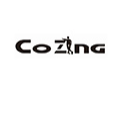What are the indications of COZING-C400 light therapy for brain?
Attention deficit hyperactivity disorder (ADHD)
Obsessive-compulsive disorder
Post-traumatic stress disorder (PTSD)
Cognitive dysfunction, traumatic brain injury, pain, enhancing attention
And concentration, and decreasing assaultive behavior
What's the technical parameter of the COZING-C400 light therapy for brain?
What are the advantages of COZING-C400 light therapy for brain ?
1.The frequency, power intensity, treatment time can be adjusted by the phone.
2. Customized treatment protocol can be saved, saving time and effort.
3. Treatment history can be recorded and tracked for easy follow-up.
4. The newest wearable laser light cap , the 1st one in the international marketing.
5. The newest item, huge potential marketing with good potential for growth.
6. Technical parameters can be customized to meet the needs of different people.
7. Import and export of treatment program data to provide data reference for treatment.
8. Wavelength, output power intensity, color,and frequency can be customized for all ages.
9. COZING Infrared Brain Photobiodulation Helmet with 426 pieces of Red Infrared light diodes, powerful and easy to operate, the frequency, power intensity, treatment time can be adjusted by the phone.
10.We divided the brain into 12 regions, each regions we can adjust the power intensity, frequency data and time.


How does COZING-C400 light therapy for brain helmet work?
Photobiomodulation for TBI therapy uses near-infrared (NIR) light, typically in the 600- to 1100-nm wavelength range, and is believed to elicit biostimulation mediated by mitochondrial light absorption. Specifically, cytochrome C oxidase, a large trans-membrane protein complex that is a part of the respiratory electron transport chain, is thought to absorb the light and upregulate adenosine triphosphate production.The NIR may also upregulate messenger molecules, including reactive oxygen species and nitric oxide, which in turn activate other transcription factors, such as nuclear factor-κβ and activator protein-1, that enter the nucleus and cause transcription of a range of new gene products.




